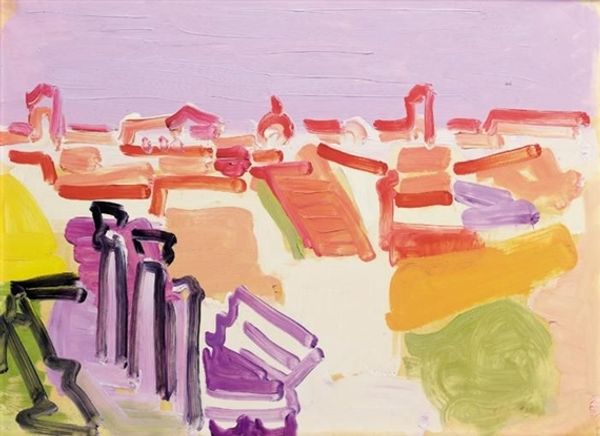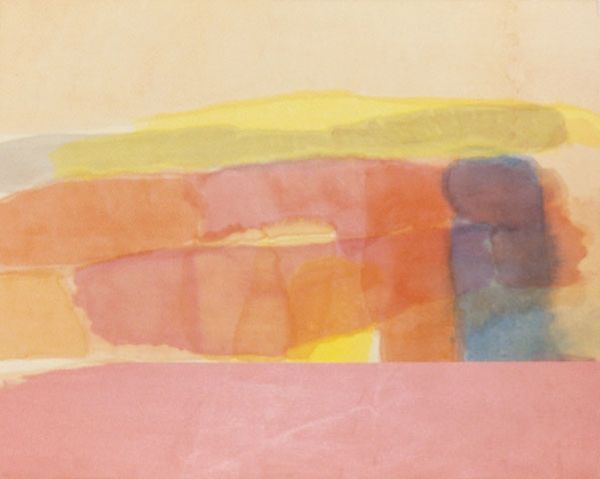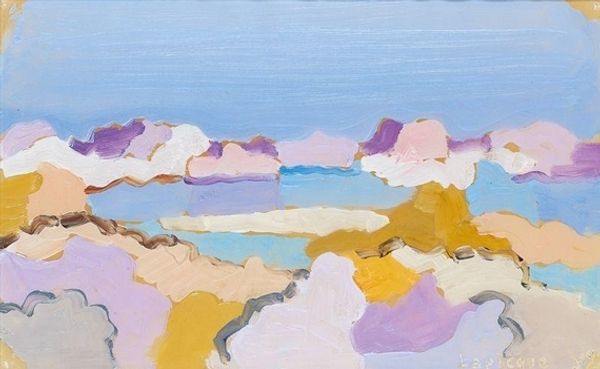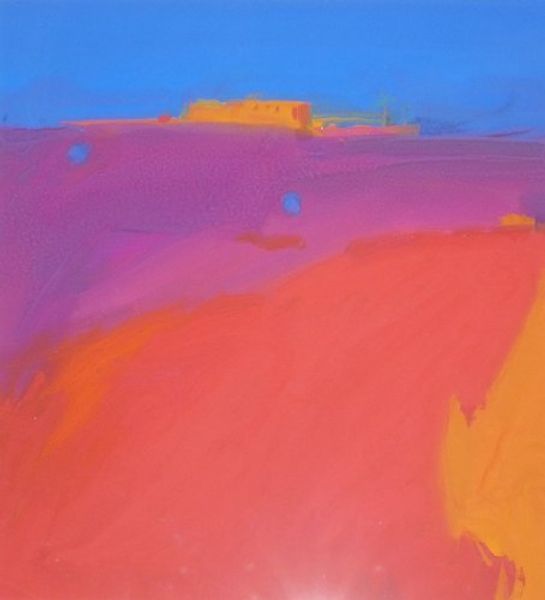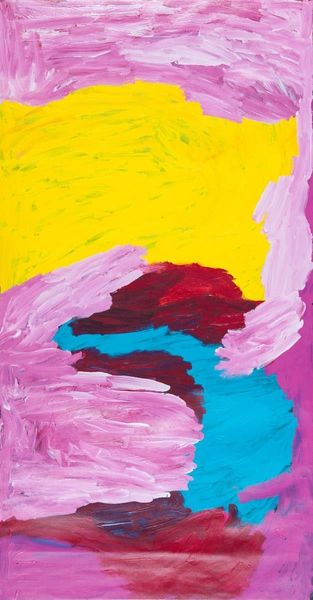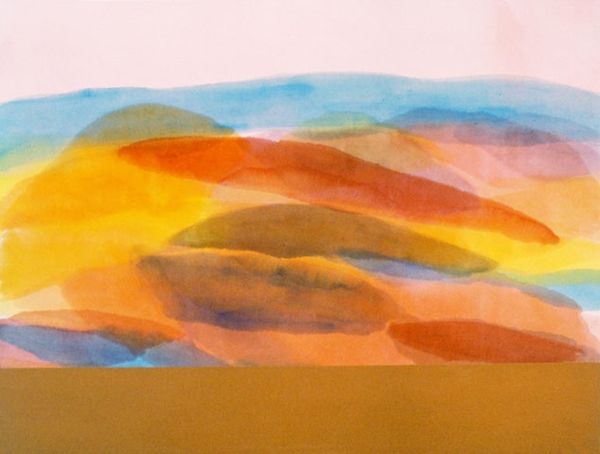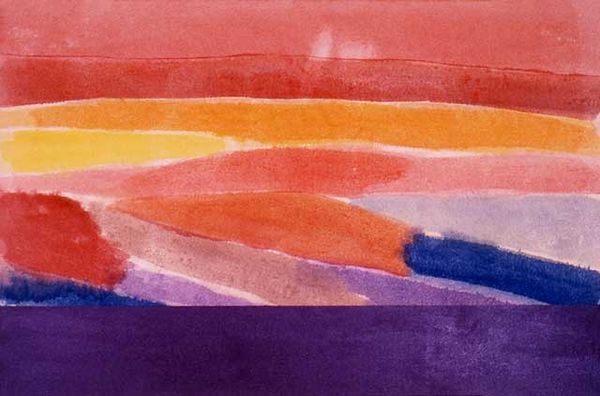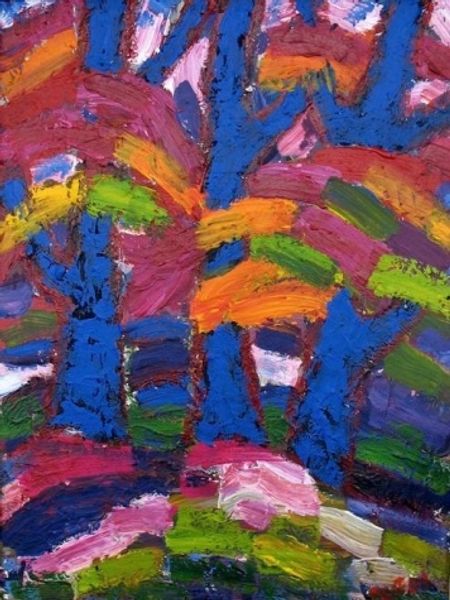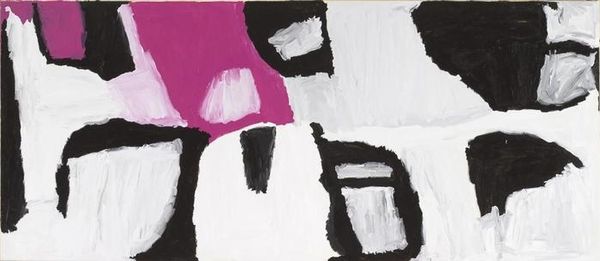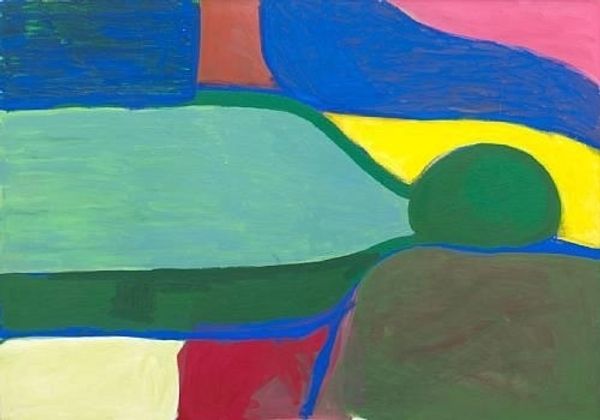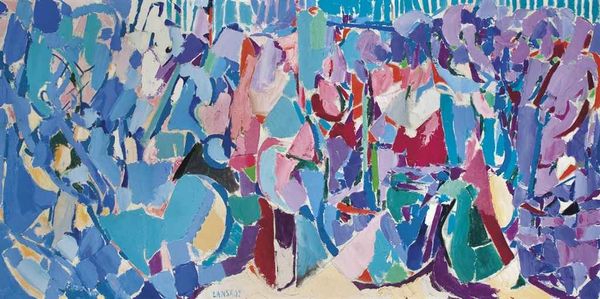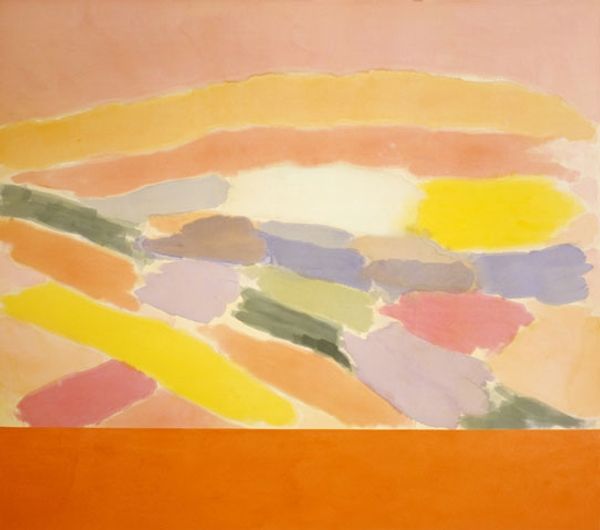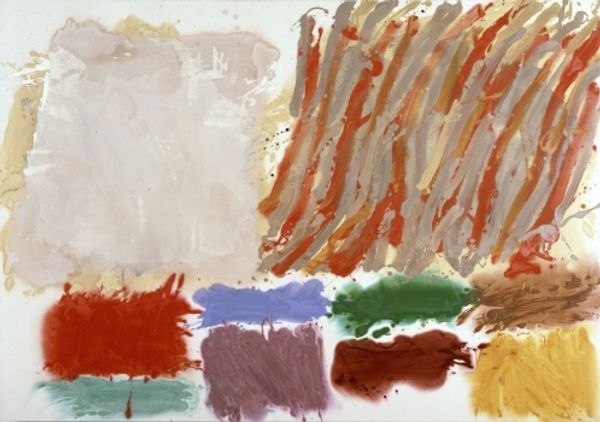
Copyright: Charles Lapicque,Fair Use
Charles Lapicque’s painting “Désert” presents us with a landscape rendered not in realistic detail but in blocks of colour; purple, red, orange. This abstracted landscape calls to mind the psychological experience of barrenness. The title itself, ‘Désert’ – French for ‘desert’ – points not only to a physical location but to a state of emotional and spiritual emptiness. The use of bright yet somewhat clashing colours creates a tension, as if the artist is wrestling with the aridity of the subject matter, trying to coax life from it. Consider how the desert has been used in art across the ages. Early Christian art, for example, often depicts the desert as a place of trial and spiritual awakening, as experienced by hermits or Christ himself. Lapicque's “Désert” seems to echo these historical and psychological experiences of the desert as a place of both despair and potential transformation. The stark colours evoke a sense of isolation but also hint at an underlying vibrancy, reflecting the cyclical pattern of cultural memory and the power of the human psyche to find meaning in the most desolate landscapes.
Comments
No comments
Be the first to comment and join the conversation on the ultimate creative platform.
